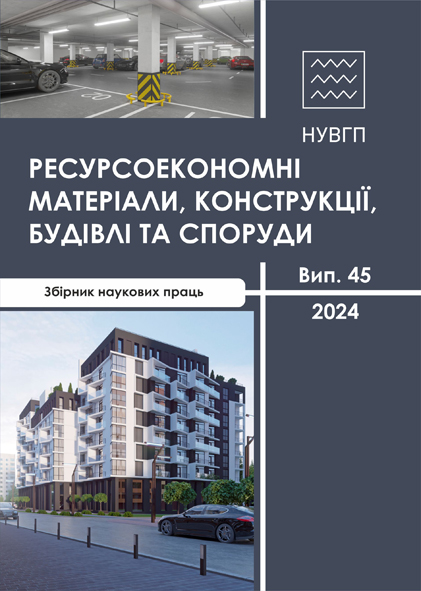REINFORCED CONCRETE BENDING ELEMENTS WITH PARTIAL LAYER-BY-LAYER DISPERSED REINFORCEMENT IN A STRESS-STRAIN STATE.
DOI:
https://doi.org/10.31713/budres.v0i45.12Abstract
In construction with increasing levels of loads, as well as with constantly growing requirements for resource and energy saving when using high-capacity concrete in structures, it is advisable to use fibre concrete as one of the most promising types. Fibre reinforcement is an effective method for improving the physical and mechanical characteristics of concrete. The addition of fibres to the concrete mix improves the elastic-plastic behaviour at different stages, reduces shrinkage and improves durability.
It is technologically feasible to manufacture reinforced concrete structures from the same concrete composition, and therefore concrete layers with different strengths can be obtained by adding fibre to the concrete, in which case the height of the section of reinforced concrete elements is partially dispersed reinforcement, which can significantly increase the strength characteristics and significantly improve the serviceability of structures.
The aim of the study is to investigate the actual operation (stress-strain state) of bending reinforced concrete structures with a layer-by-layer arrangement of partial dispersed reinforcement in the cross-section under the action of constant loads, to establish their comparative indicators of serviceability and to develop methods for calculating their strength, deformation and crack resistance based on the deformation calculation methodology that intersects with European standards.
The research objectives include the development of a scheme of bending elements with partial layer-by-layer dispersed reinforcement; experimental studies of the operation of experimental samples of bending elements with and without partial layer-by-layer dispersed reinforcement; development of a method for determining the parameters of dispersed partial reinforcement of the tensile zone of beams in order to increase the resistance to cracking; theoretical studies of the stress-strain state of reinforced concrete elements with partial layer-by-layer dispersed reinforcement using

